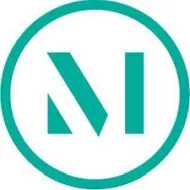Addressing whether a plaintiff had presented evidence sufficient to overcome defendants’ motion for summary judgment of non-infringement, the U.S. Court of Appeals for the Federal Circuit outlined the required elements to support a claim of inducement to infringe under §271(b), where claim language contains steps that refer to the results of the previous step. E-Pass Technologies, Inc. v. 3Com Inc., Case Nos. 2006-1356, -1357, -1358 (Fed. Cir., Jan. 12, 2007) (Linn, J.).
The plaintiff, E-Pass, is the owner of patent that claims "a method and device for substituting a single electronic multifunction card for multiple credit cards." Claim 1, the only independent claim, describes "[a] method for enabling a user of an electronic multi-function card to select data from a plurality of data sources" and recites a number of steps, some of which must be performed by the end-user/consumer.
E-Pass sued a number of personal digital assistant (PDA) manufacturers, alleging, inter alia, that the defendants had induced consumers to practice claimed the steps on their PDA devices. The plaintiff’s evidence of infringement consisted of documents illustrating the defendants’ interest in PDA-based payment technology, plans for a contactless payment demonstration in Cartes, France, business analyses of proposed contactless payment protocols and excerpts from the accused devices’ product manuals—none of which showed use of all the claimed steps or even performance of the steps in the required order.
Defendants moved for summary judgment of non-infringement. The district court granted the motion on the basis that plaintiff "had failed to adduce sufficient evidence to support a finding that any of the defendants or their customers had practiced all of the steps of the claimed method." Without evidence of direct infringement, the plaintiff was unable to prove induced infringement. E-Pass appealed.
The Federal Circuit affirmed. Specifically, the Federal Circuit held that a plaintiff must establish that the defendant induced someone to perform all of the steps of the claimed method in the necessary order and in the United States. Moreover, distinguishing Moleculon Research v. CBS, the Federal Circuit held that a showing that a defendant teaches each of the claimed steps in isolation does not suffice. In particular, the Federal Circuit focused on the fact that unlike the general purpose PDAs in issues (devices that might, in isolation, perform one or more of the claimed steps), the accused device in Moleculon "was intended to be used in only one way—to practice the infringing method—and that method was explicitly taught by the proffered instructions".
The content of this article is intended to provide a general guide to the subject matter. Specialist advice should be sought about your specific circumstances.


